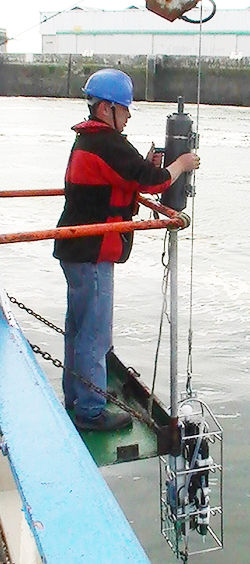SICB Annual Meeting 2011
January 3-7, 2011
Salt Lake City, UT
Symposium: Population Dynamics of Crustaceans

Symposium Overview
A previous SICB/TCS symposium on Crustacean Genomics and Proteomics highlighted genetic research activities and future directions on model organisms, but there is also an urgent need to gather data on current problems of public interest that directly impact non-model crustaceans, such as the effects of oil spills, overfishing, and industrial pollution on crab, shrimp, crayfish, and krill species. Many different groups of crustaceans occur in the same waters together as part of complex food webs, but the researchers who study these crustaceans are often species-focused and isolated in their own taxonomic societies, such as the World Association of Copepodologists. On the other hand, crustacean researchers can get lost in the shuffle of broader societies, such as the North American Benthological Society. We need a cross-pollination of specialists and generalists for targeted studies of how the diverse Crustacea responds to ongoing environmental change at local and regional levels to understand adaptations in life history characteristics, breeding behaviors, and gene flow routes.
A wide range of crustacean groups will be covered, including crabs, shrimps, crayfishes, cladocerans, and copepods, from unique habitats, including the Chesapeake Bay, European coastlines and estuaries, the Bering Strait, groundwater caves, the Great Lakes, and the open oceans and lakes. This symposium provides the launching pad for new exciting collaborations involving a more diverse set of participants, and sets the stage for large research directives.
Sponsors
The Crustacean Society, SICB Division of Invertebrate Zoology, American Microscopical Society

Symposium Objectives
Crustaceans are a globally-distributed group, found across extreme and backyard habitats from the equator to the poles. They are an ideal focal assemblage for assessment on the impacts of climate change and anthropogenic disturbance on diverse crustacean populations, such as how the Gulf of Mexico oil spill is affecting shrimps, crabs, and crayfishes. This symposium is geared toward phylogeography, behavioral ecology, invasion biology, and ecosystem surveys, and introduces a new early-career cohort of scientists, students, post-doctoral associates, and faculty working on exciting population biology research who can take steps together toward multi-disciplinary efforts to further the field.
Symposium Organizer
Jen Buhay (USDA, Iowa State University)
Symposium Speakers

S7.1 Thursday, Jan. 6, 08:00 SEITZ, R.D.*; KNICK, K.E.; WESTPHAL, M.:
Diet preferences and bottom-up control of blue crabs in Chesapeake Bay
S7.2 Thursday, Jan. 6, 08:30 DERRY, A.M.:
Evolving Crustacean Metacommunities in Aquatic Ecosystems
S7.3 Thursday, Jan. 6, 09:00 CRISTESCU, Melania E:
The Genetics of Habitat Transitions: Lessons from Invasion Biology
S7.4 Thursday, Jan. 6, 09:30 HARDY, S M*; ALBRECHT, G; HUNDERTMARK, K; BLUHM, B; HUETTMANN, F:
Assessing distribution and structure of unexploited snow crab populations in Alaskan waters
S7.5 Thursday, Jan. 6, 10:30 GOETZE, Erica:
Population differentiation in the open sea
S7.6 Thursday, Jan. 6, 11:00 CAMPOS, Joana:
The ecogeography of brown shrimp Crangon crangon
S7.7 Thursday, Jan. 6, 11:30 SULLIVAN, K.A.*; BAKIAN, A. V.:
How scientific societies can include, promote and retain women members
S7.8 Thursday, Jan. 6, 13:00 BUHAY, J.E.:
Leading researchers to water: Assembling multi-disciplinary collective networks for the study of crustacean populations
S7.9 Thursday, Jan. 6, 13:30 , :
Open Forum

